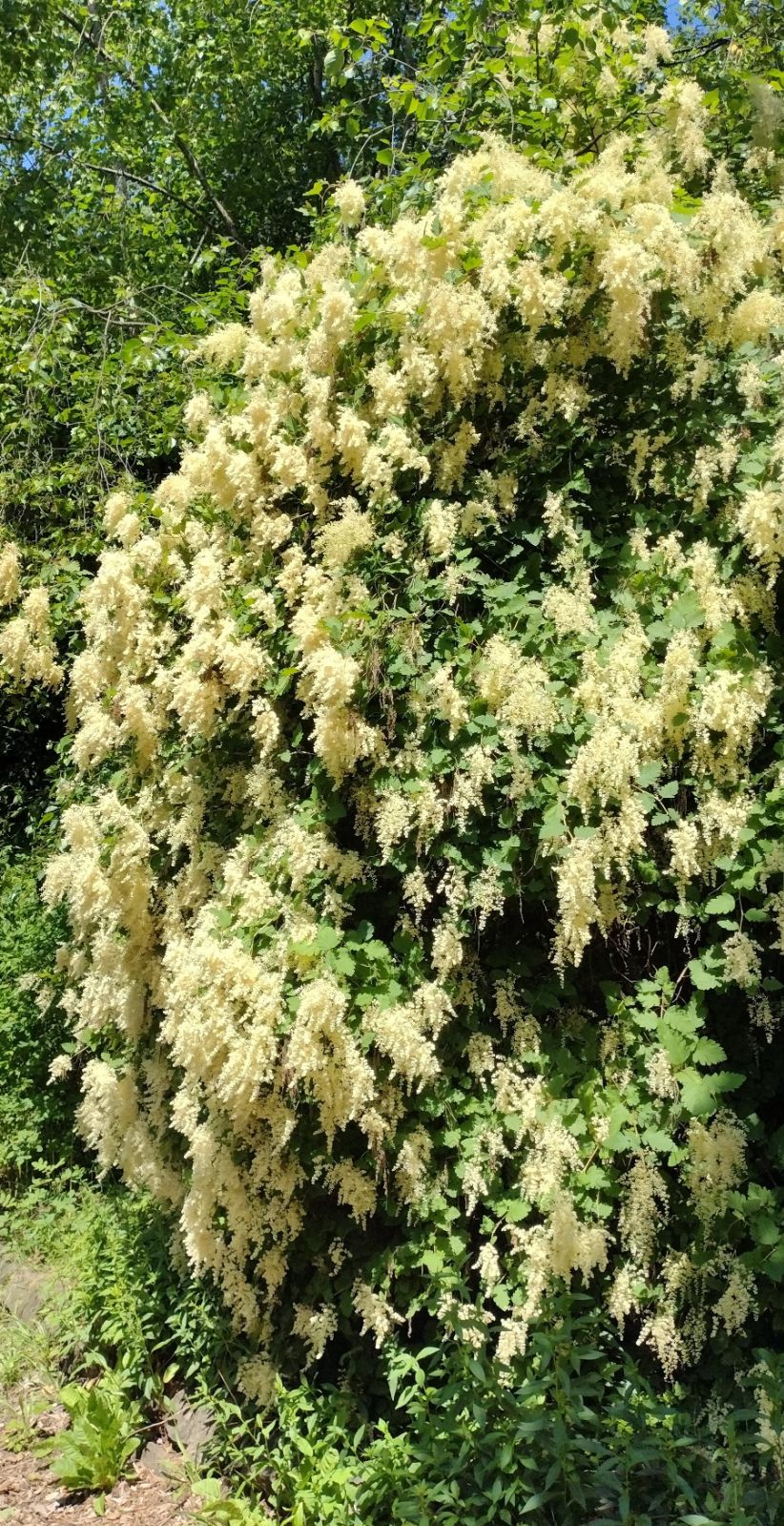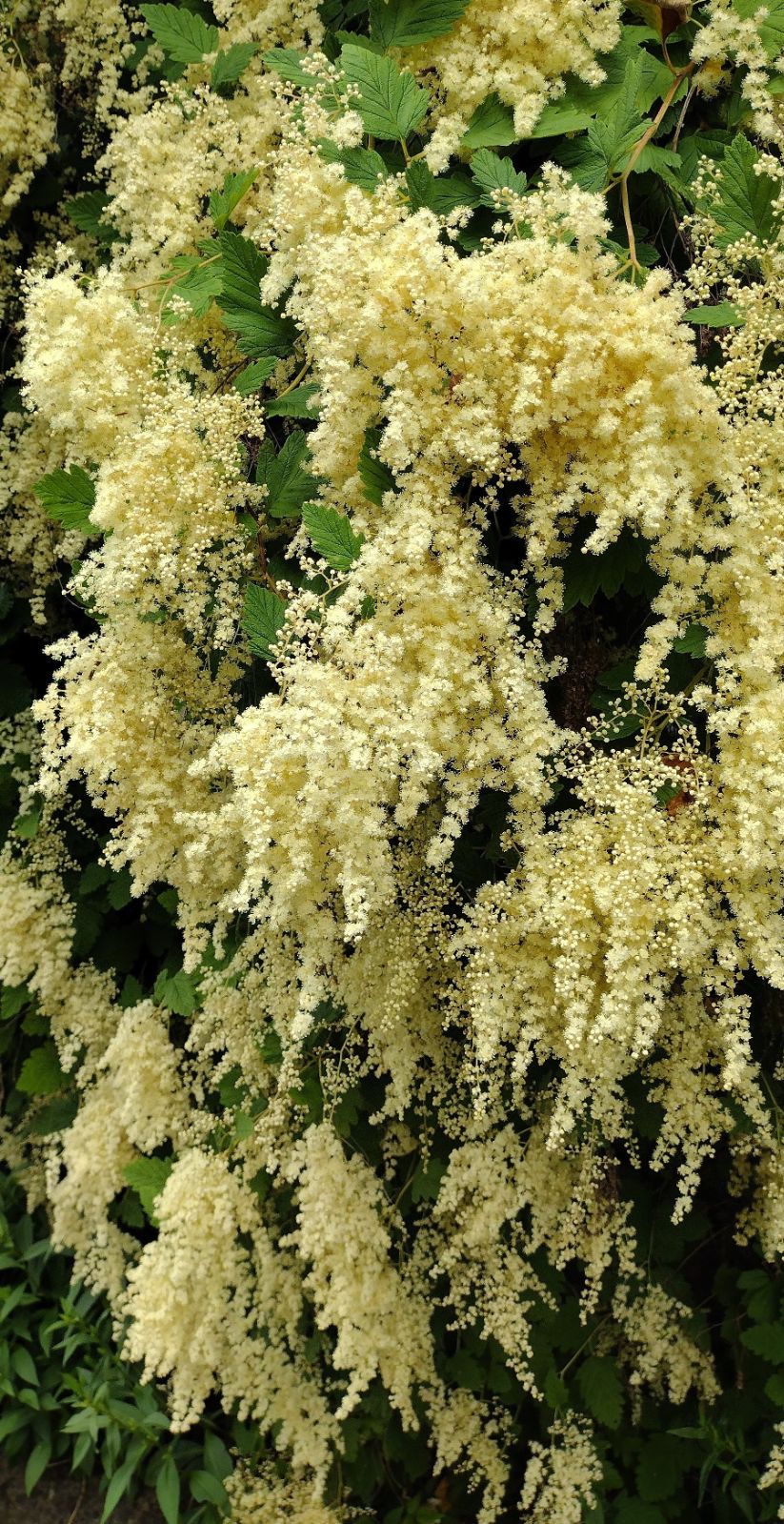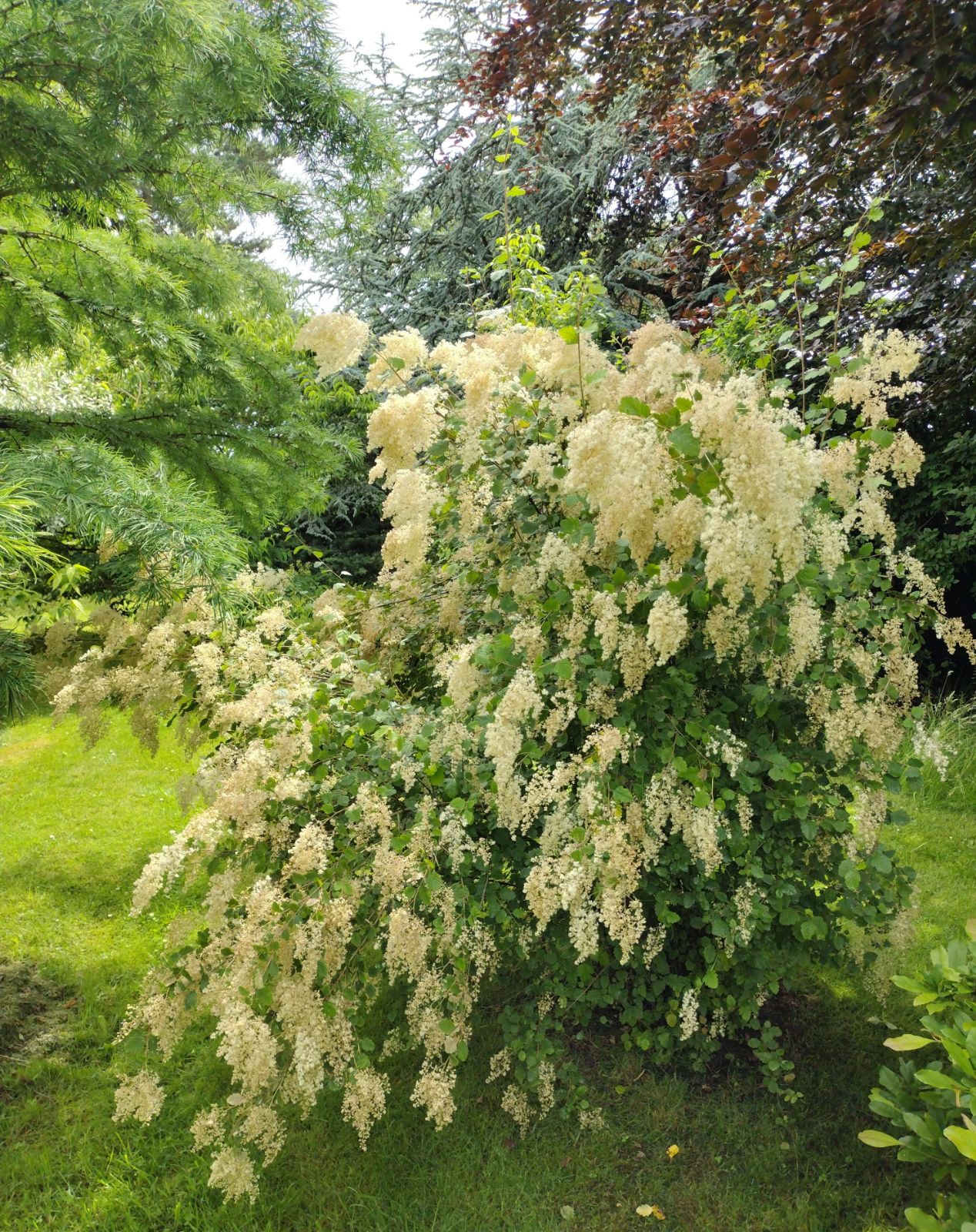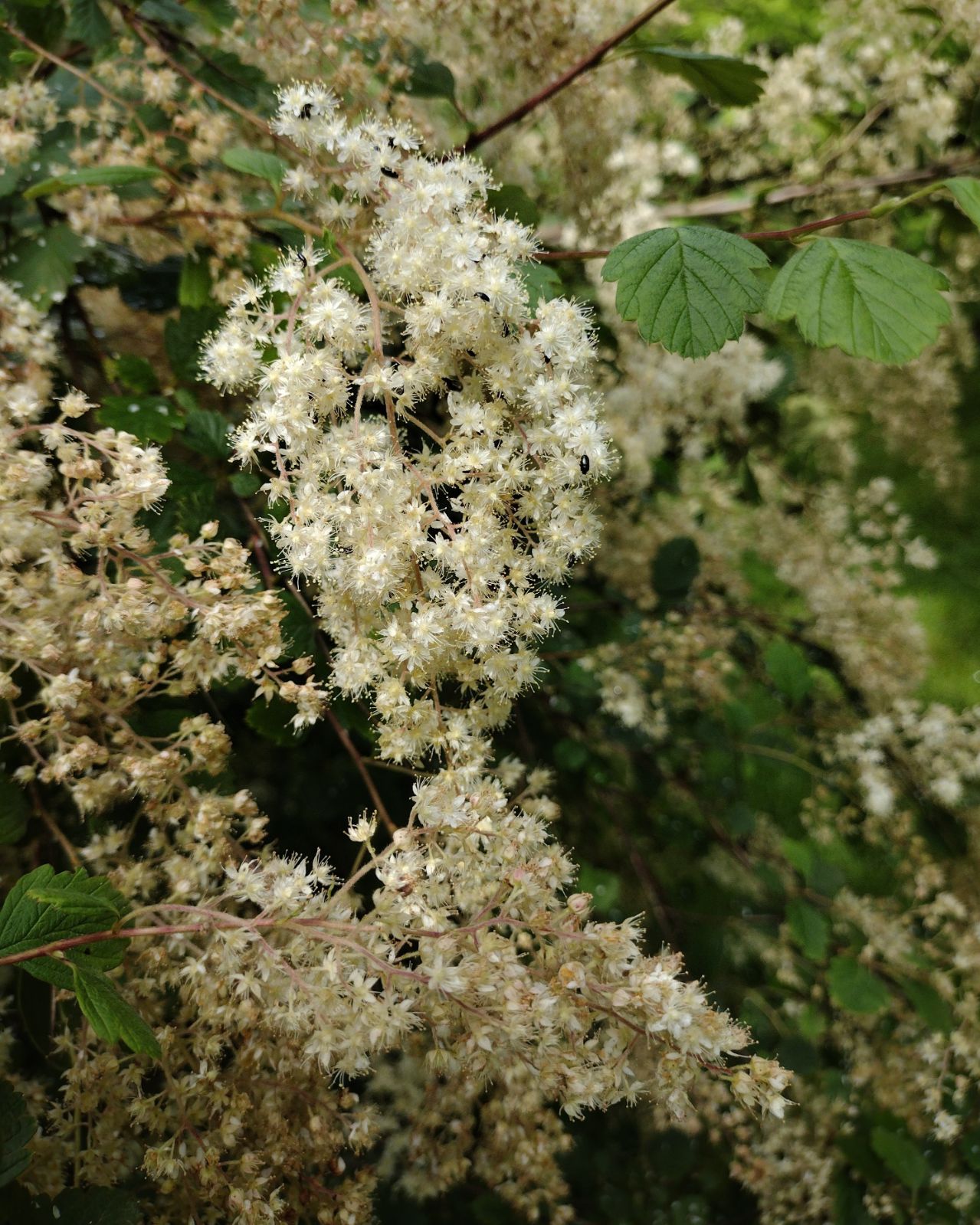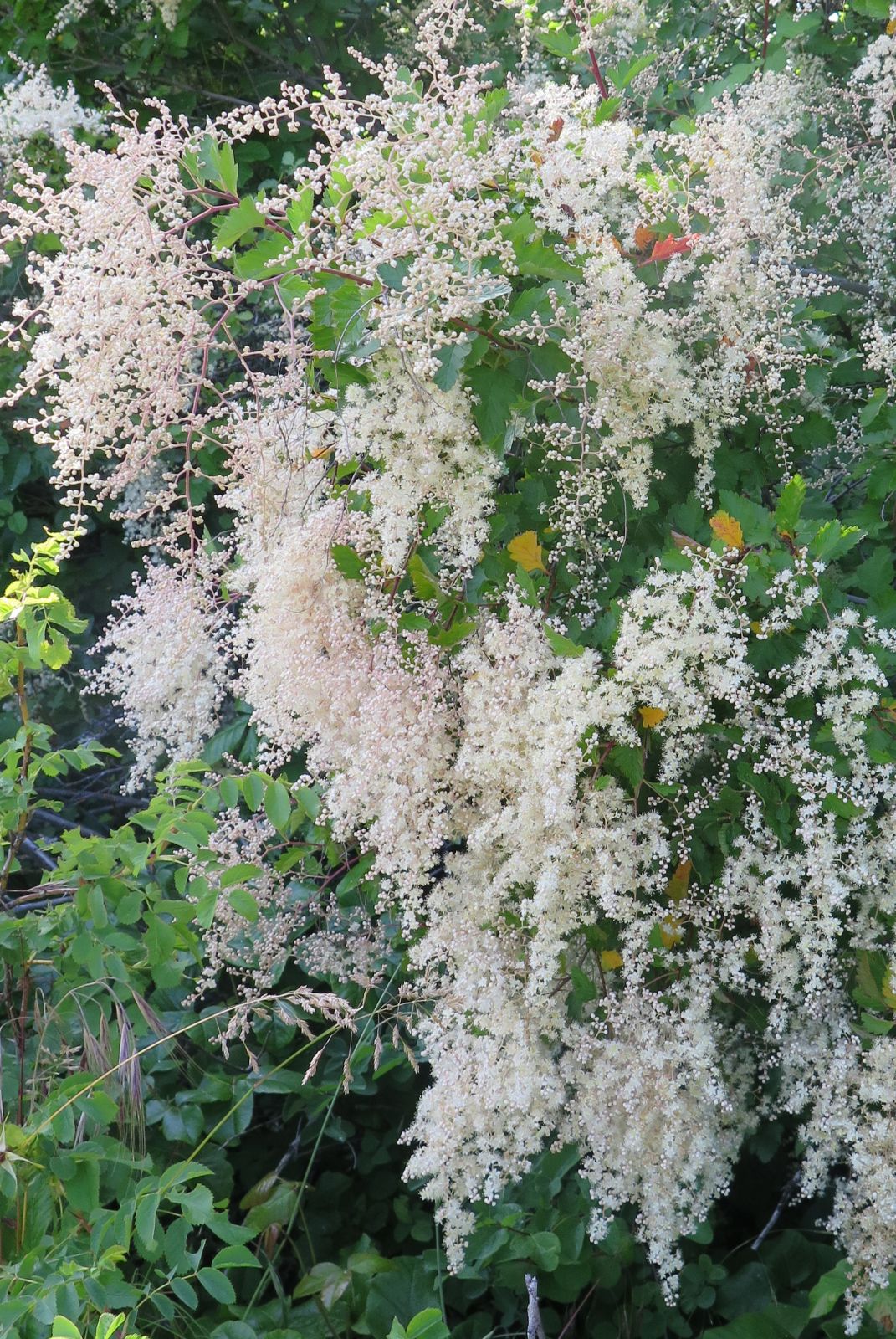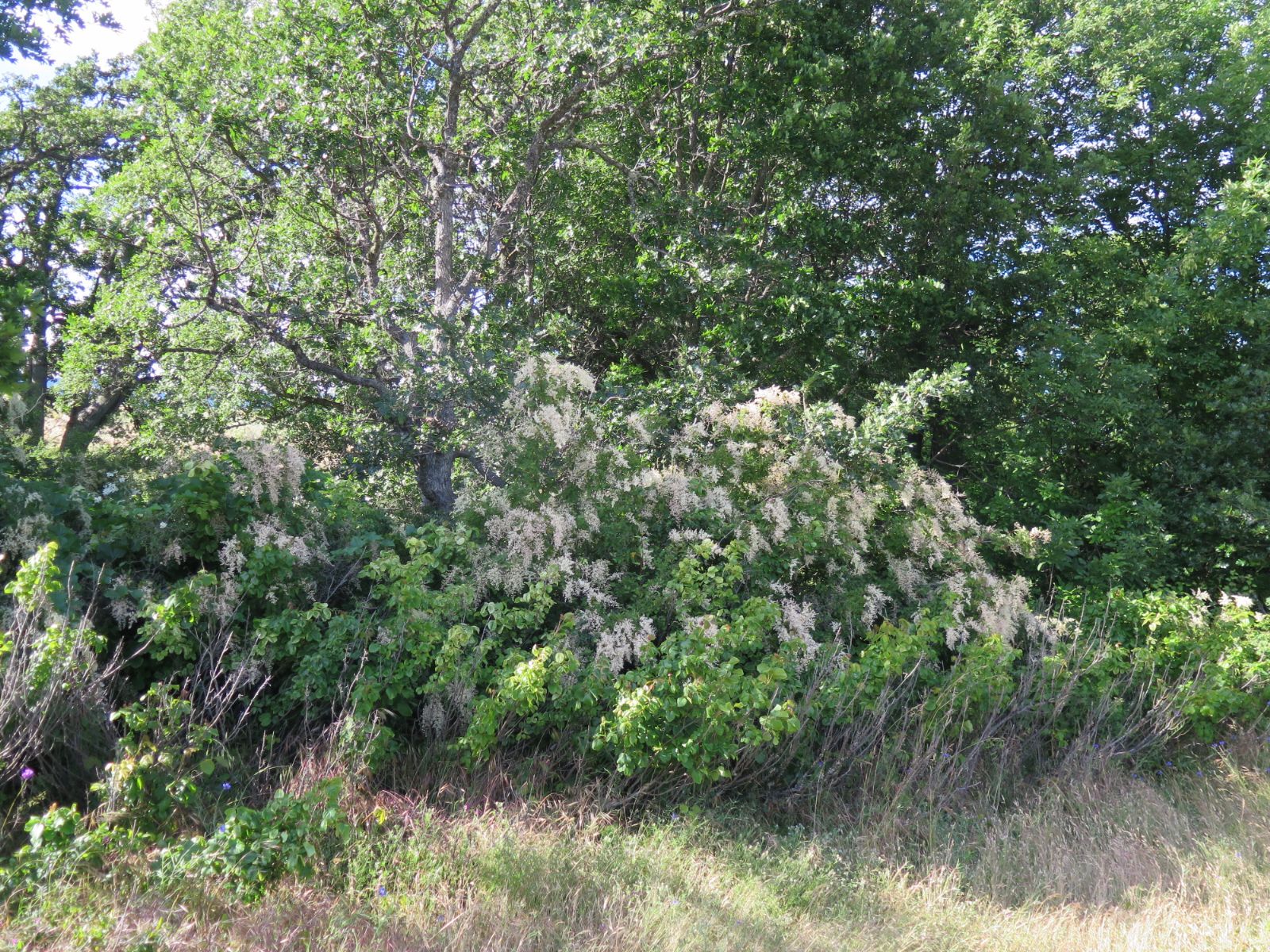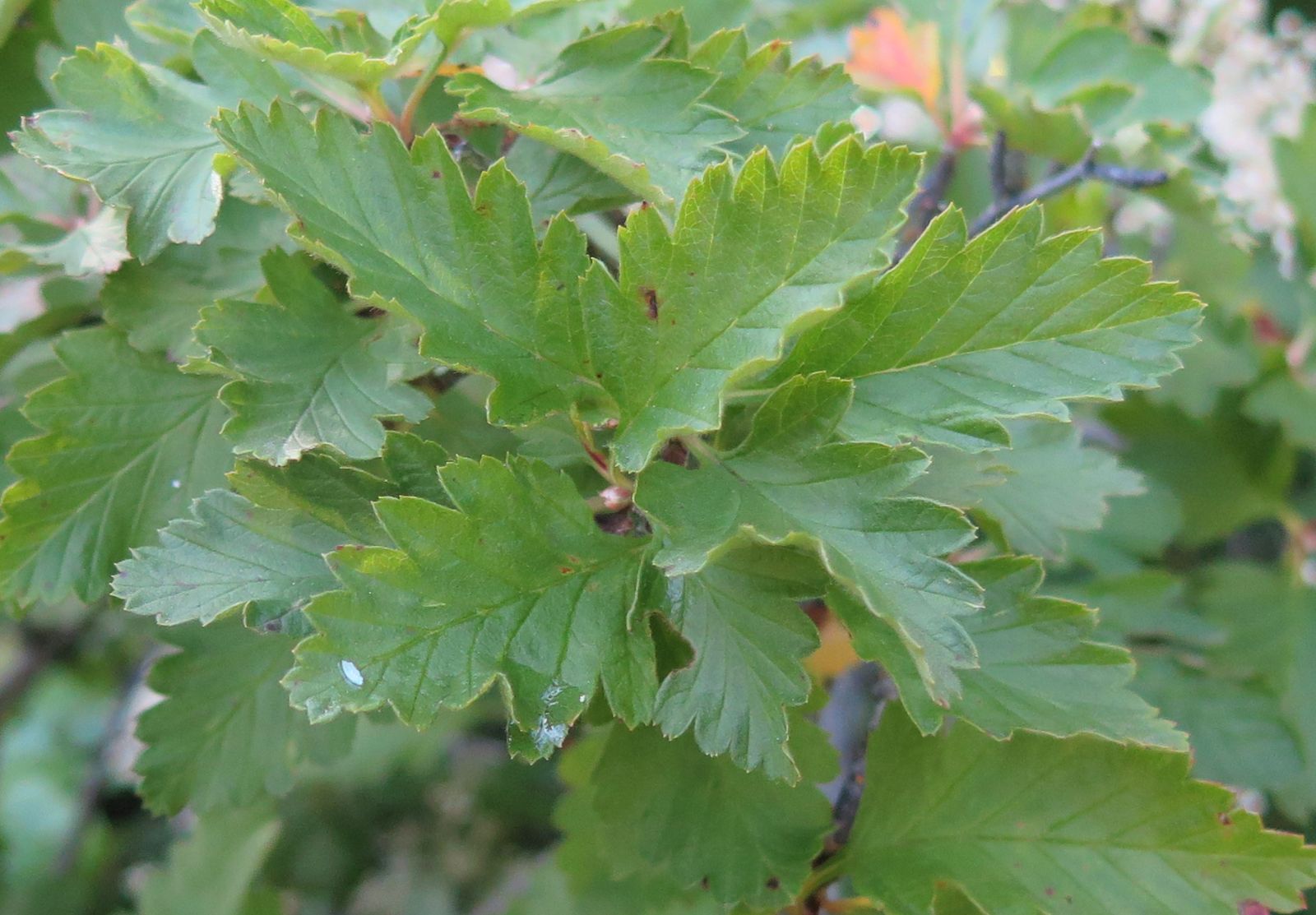Holodiscus discolor
Credits
Article from Bean's Trees and Shrubs Hardy in the British Isles
Recommended citation
'Holodiscus discolor' from the website Trees and Shrubs Online (treesandshrubsonline.
Genus
Common Names
- Oceanspray
- Ironwood
- Creambush
Synonyms
- Spiraea discolor Pursh
- Spiraea ariaefolia Sm.
Other taxa in genus
A large deciduous shrub, usually 8 to 12 ft high, considerably more in width. Stems erect at the base, but branching and gracefully arching or pendulous at the top; young branches downy and slightly ridged. Leaves ovate, with a straight or broadly wedge-shaped base, 2 to 31⁄2 in. long, 11⁄2 to 3 in. wide on the barren stems, smaller on the flowering branches, each margin cut up into four to eight lobes which are themselves sharply toothed, upper surface slightly hairy, lower one covered with a grey felt; stalk 1⁄4 to 5⁄8 in. long. Flowers creamy white, small, produced during July in pendulous, plume-like panicles 4 to 12 in. long; flower-stalks and calyx downy. Fruit an achene, non-splitting, woolly.
Native of western N. America; introduced by Douglas in 1827. It was once known in gardens as Spiraea ariaefolia – an appropriate name, recalling the resemblance of its leaves to some of the Aria group of Sorbus. It produces an extraordinary profusion of blossom, and is exceedingly graceful in habit. Many fine plants are scattered over the south of England. This shrub is seen to best advantage as an isolated specimen with a dark green background, say of holly. In thin woodland it also thrives admirably.
H. dumosus (Nutt.) Heller Spiraea dumosa Nutt.; H. discolor var. dumosus (Nutt.) Coult. – A spreading shrub attaining a height of 10 ft in the wild, but often much lower. Leaves obovate, mostly 3⁄4 to 11⁄2 in. long, cuneate at the base and tapered gradually into the stalk, grey-green above, woolly beneath, with three to six teeth on each side. Panicles erect. Native of western N. America from Wyoming to Texas and Arizona, and of N. Mexico. It is rare in gardens.

